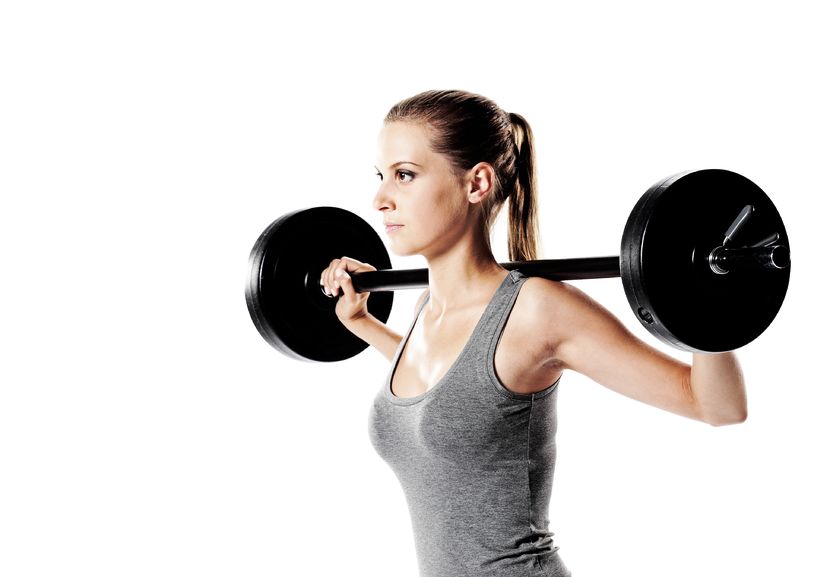Weight Loss Motivation Biography
Source (google.com.pk)
The Low-Glycal Diet™ App by BioFit
Get the App that over 65,000 users in 100+ countries are using to achieve faster, healthier weight loss. Created by Dr. Jeffrey Dunham for his patients and now available to everyone!
iPhone 5S photo
What’s the best way to lose weight? Should you reduce the total number of calories in your diet or lower the total glycemic load? There is scientific evidence to support both approaches, so which one should you follow? Well, it turns out that both are important!
Everyone knows that calories are important, but not everyone knows that when you eat those calories you can do three things with them: burn them for energy; store them as fat; or use them to build lean body mass.
What you do with those calories is determined by the hormones in your body, the most important being insulin. Your insulin level is determined not only by the number of calories you eat, but by the type of calories you eat. This is why what you eat (glycemic load) is as important as how much you eat (calories)!
The Importance of Glycemic Load
Insulin is the main driver of fat storage, and you only secrete insulin when your blood sugar goes up. The faster your blood sugar goes up, the more insulin you secrete and the more fat you store.
BioFit Diet App screen shot 1Select one of the food categories.BioFit Diet App screen shot 2Select each food that makes up your meal.BioFit Diet App screen shot 3Foods that don't comply with the diet are flagged.BioFit Diet App screen shot 4Your final green, yellow or red meal rating is displayed.
The glycemic load of a meal is a measure of how fast a meal raises your blood sugar, so it’s really a measure of how much insulin you secrete after a meal, and, therefore, how fattening that meal is.
In general, only meals containing carbohydrates raise your blood sugar and have a positive glycemic load. Meals containing only protein and/or fat do not raise your blood sugar, and, therefore, have a glycemic load of zero.
This means that you do not store the calories in a meal as fat (even if it’s a very high-calorie meal) if it doesn’t have any carbohydrates in it. You’ll need to either burn those calories for energy or use them to build lean body mass.
For example, bacon and eggs have a high number of calories, but aren’t fattening unless you eat them with carbohydrates (toast and potatoes). So if you’re going to eat a high-calorie meal containing fat, make sure it has no carbohydrates!
When you eat carbohydrates is important
You store fat mainly during the day when you’re eating (via insulin secretion) and burn fat mainly at night when you’re sleeping (when insulin levels drop). Since your body needs an energy source to keep your organs functioning while you sleep, you start breaking down fat to provide that energy.
A low insulin level is the biggest stimulus for your fat cells to start releasing fat, and this happens at night when you’re not eating. The second biggest stimulus for your fat cells to release fat is a high growth hormone level, so you get a growth hormone surge right after you fall asleep.
Insulin antagonizes growth hormone. Insulin causes you to store fat and growth hormone causes you to burn fat. If you eat foods before bed that spike your blood sugar and give you an insulin surge (i.e., carbohydrates), you will store fat while you’re sleeping instead of breaking down fat, and the growth hormone you secrete will be less effective in burning fat.
When you eat, therefore, can be important as what you eat. Eating carbohydrates before bed is more fattening than eating them for breakfast, so if you’re going to eat carbohydrates, don’t have them with fat and don’t eat them before bed!
The Low-Glycal Diet™ App uses total calories and total glycemic load to calculate the total number of “glycals” in a meal, which is a better predictor of how fattening a meal is.
Glycals are calories stored as fat.
The “glycal” is calculated from a formula developed by Dr. Jeffrey S. Dunham and is based on the latest medical research.
The Low-Glycal Diet App contains over 1000 easy-to-find foods which are color coded as green (low-glycal), yellow (medium-glycal), or red (high-glycal) if eaten alone.
You assemble a meal by choosing the individual foods in that meal. The app then calculates the total glycals in that meal and gives you a green, yellow or red result.
The ranges of green, yellow and red become stricter after 6pm (the app reads the time of day), since eating carbohydrates at night can be more fattening than eating them earlier in the day (see above).
You never have to be hungry on the Low-Glycal Diet™. You can have all the green meals you want in a day, as long as they are separated by 2 hours. You’re allowed one yellow meal a day and one red meal a week.
The fat loss is almost effortless, so start losing fat now!
In order to lose weight, you need to create a calorie deficit, or eat fewer total calories than your body burns. No single food can determine whether you lose weight, but some foods, such as yogurt, can make it easier for you to reduce your total calorie intake. Eat yogurt as part of an overall balanced diet, and consult with a nutritionist as you develop your weight loss plan.
Lean Protein
Yogurt can be good for weight loss because it is low in calories, with only about 120 calories in a cup of fat-free yogurt. Each 1-cup serving of yogurt provides about 8 g to 13 g protein, which is a filling nutrient because it slows down digestion so you feel less hungry for the next meal. Choose low-fat or fat-free yogurt instead of yogurt made from whole milk, because fat increases the calorie content.
Uses
Save calories and support weight loss by using yogurt instead of high-fat, creamy salad dressings or vegetable dips. Have no-sugar-added flavored yogurt as a sweet alternative to high-calorie desserts such as ice cream, candy or baked goods. For a snack, a container of yogurt makes a convenient, portion-controlled option that promotes weight loss better than a multi-serving bag of potato chips or crackers. Add some fruit or whole-grain cereal to your yogurt for a calorie-controlled breakfast.
High-Calcium Food
Yogurt is naturally high in calcium, and individuals who eat about 1,200 mg to 1,400 mg calcium per day tend to have lower weights or better success in weight loss diets, according to the Linus Pauling Institute Micronutrient Information Center. A cup of yogurt has about 300 mg calcium. This potential effect of calcium may occur when you get calcium from food sources, not from dietary supplements, and too much calcium from supplements may lead to toxic effects such as kidney stones.
Considerations
Weight Loss Motivation Weight Loss Before And After Motivation Quotes Diet Tips Inspiration Transformations Exercises Pills Pictures.

Weight Loss Motivation Weight Loss Before And After Motivation Quotes Diet Tips Inspiration Transformations Exercises Pills Pictures.

Weight Loss Motivation Weight Loss Before And After Motivation Quotes Diet Tips Inspiration Transformations Exercises Pills Pictures.

Weight Loss Motivation Weight Loss Before And After Motivation Quotes Diet Tips Inspiration Transformations Exercises Pills Pictures.

Weight Loss Motivation Weight Loss Before And After Motivation Quotes Diet Tips Inspiration Transformations Exercises Pills Pictures.

Weight Loss Motivation Weight Loss Before And After Motivation Quotes Diet Tips Inspiration Transformations Exercises Pills Pictures.

Weight Loss Motivation Weight Loss Before And After Motivation Quotes Diet Tips Inspiration Transformations Exercises Pills Pictures.

Weight Loss Motivation Weight Loss Before And After Motivation Quotes Diet Tips Inspiration Transformations Exercises Pills Pictures.

Weight Loss Motivation Weight Loss Before And After Motivation Quotes Diet Tips Inspiration Transformations Exercises Pills Pictures.

Weight Loss Motivation Weight Loss Before And After Motivation Quotes Diet Tips Inspiration Transformations Exercises Pills Pictures.

No comments:
Post a Comment